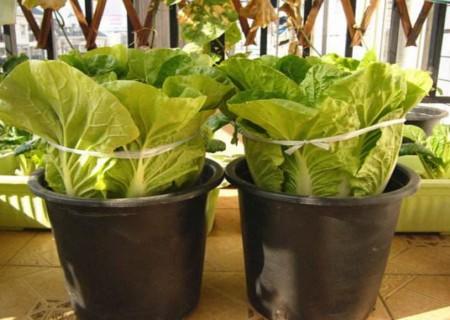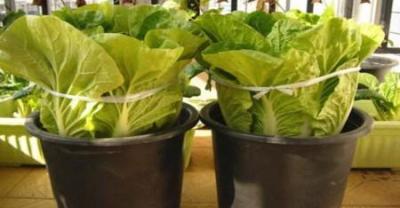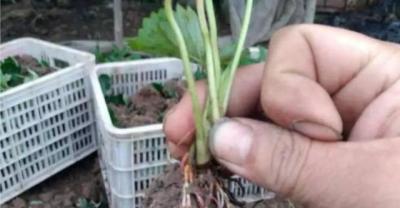Balcony planting method of potted Chinese cabbage
"all the meat is still pork, and all kinds of vegetables are not as good as cabbages." in life, the most nourishing things are often the most common, nearest and gentle things. Chinese cabbage not only has rich nutrition and delicious taste, but also plays a good role in food therapy and health care.
Chinese cabbage is not only delicious, but also contains high dietary value, among which, for those who are sedentary and do not like exercise, the highest value is crude fiber. Crude fiber can promote intestinal peristalsis, help digestion, reduce abdominal fat and help lose weight. In addition, Chinese cabbage is also rich in minerals, which can enhance the immunity of the body. It can be seen that there is a reason to like eating Chinese cabbage.

Back to the point, let's take a look at how to grow potted cabbage on the balcony.
1. Seedling raising technology
Potted Chinese cabbage on the balcony can be sown directly without seedling transplanting. Each flowerpot can sow 2-3 seeds, and the seeds can choose varieties suitable for this region. Before sowing, the nutrient soil in the flowerpot needs to be watered with enough water, and then the seeds are placed in the flowerpot and covered with about 1 centimeter of sifted fine soil. Sprinkler can be used to pour small water every day to ensure that the surface is moist and seedlings can emerge in about 4-6 days. When the seedlings are "two leaves with one heart", the seedlings with weak growth and abnormal cotyledon shape should be pulled out and a strong one should be left behind.
2. Fitness cultivation techniques.
(1) temperature and humidity management
Chinese cabbage likes cool climate, and the optimum growth temperature is 18-20 ℃. Therefore, it is possible to choose to sow seeds in medium volt or even last volt. The amount of water required in the seedling stage is small, and the small water can be watered frequently, as long as the soil surface is moist, and the seedlings can be prevented from growing. When Chinese cabbage enters the heading period, the water demand is relatively large at this time, so pay attention to watering in time.
(2) Lighting management
Chinese cabbage likes plenty of light, so planting on the south balcony is more conducive to its growth.
(3) fertilizer management
The root system of Chinese cabbage is shallow and its absorptive capacity is weak, so it is necessary to loosen the soil for 2-3 times at the seedling stage with a depth of 5-6 cm, so as to promote root growth and root absorption of nutrients and water.
In addition, in the seedling stage, fertilization is not recommended to avoid overgrowth. There are 8 true leaves in Chinese cabbage, which is the rapid growth period of Chinese cabbage. At this time, organic fertilizer should be applied many times to promote the growth of Chinese cabbage. Foliar calcium fertilizer can be used if necessary to avoid "dry heartburn" of Chinese cabbage. In the early stage of heading, the demand for nitrogen is large, and one more nitrogen fertilizer should be applied; in the middle stage of heading, topdressing can be carried out according to the growth situation. Each topdressing combined with watering is carried out.
3. Green prevention and control technology
Chinese cabbage is prone to pests such as aphids, whitefly and Plutella xylostella, and diseases such as virus, downy mildew and soft rot, which can be removed manually at the initial stage of the occurrence of diseases and insect pests. One of the diseases, called "Chinese cabbage soft rot", is serious and must be prevented in advance.
The soft rot of Chinese cabbage is caused by bacteria, which can be spread through human activities, wounds caused by insect pests and by means of rainfall and watering. When sowing prematurely, high temperature and heavy rain, low-lying stagnant water and serious pests, the disease occurs seriously. It initially occurred at the base of the outer leaves near the ground, with local decay and grayish brown. When the conditions are right, the whole plant softens and decays quickly, and gives off a special stench.
How to prevent it in advance?
First of all, before growing vegetables, the soil used should be dried and mature organic manure should be selected.
Secondly, it should be drained in time after rain, or do not let the tray accumulate water when watering. Once the disease occurs, the diseased plants should be pulled out in time, and the soil near the diseased plants should be disinfected, and then watered. And timely control of insect pests, reduce man-made and insect pests caused wounds.
Finally, please bear in mind a principle, that is, soft rot should be prevented, but in the event of the disease, 77% copper hydroxide 500 times solution or 20% thiamidone 500 times solution can be used to irrigate the root or base at the initial stage of the disease. focus on the control of plants near the central plant.
- Prev

A new method of growing vegetables-- hydroponic culture
Super fresh hydroponic vegetables, really pollution-free, and many fine products! Each one is super fresh, just looking at the picture will have a super appetite! And every one of them.
- Next

For those who plan to plant spring peanuts, please pay attention!
2017 peanut price and yield are good compared with other crops, although there is a weather episode, but the overall peanut area in 2018 is still relatively good.
Related
- Fuxing push coffee new agricultural production and marketing class: lack of small-scale processing plants
- Jujube rice field leisure farm deep ploughing Yilan for five years to create a space for organic food and play
- Nongyu Farm-A trial of organic papaya for brave women with advanced technology
- Four points for attention in the prevention and control of diseases and insect pests of edible fungi
- How to add nutrient solution to Edible Fungi
- Is there any good way to control edible fungus mites?
- Open Inoculation Technology of Edible Fungi
- Is there any clever way to use fertilizer for edible fungus in winter?
- What agents are used to kill the pathogens of edible fungi in the mushroom shed?
- Rapid drying of Edible Fungi

